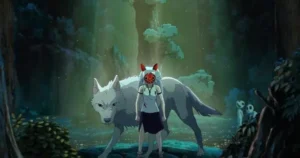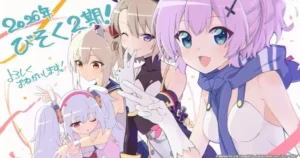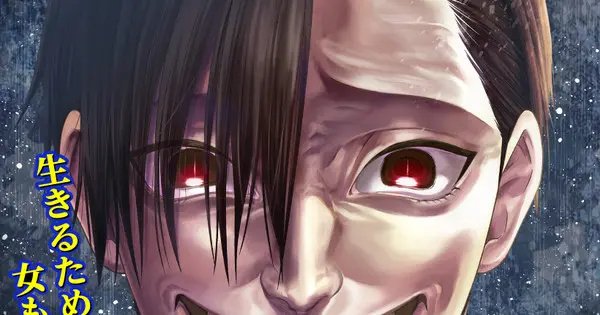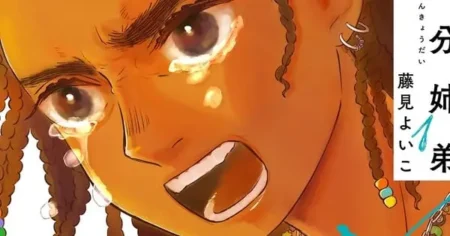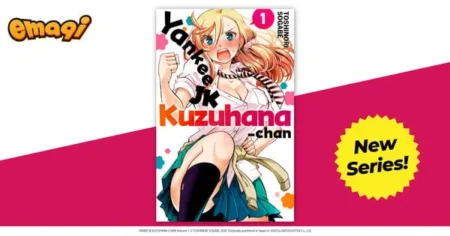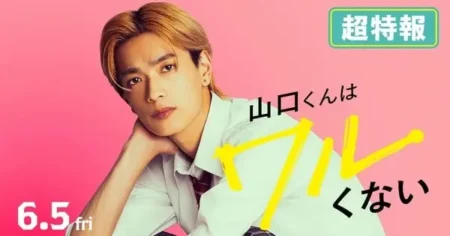Yumeya, the artist acclaimed for her work on Shadows of Kyoto, has joined forces with writer Maya Miyazaki to launch a brand new manga series titled “Warui no wa Shakai da” (It’s Society’s Fault). The series is now available on Coamix’s Monthly Comic Zenon platform.
A Budding Romance with a Dark Twist
The story of Warui no wa Shakai da centers around Maki, a woman who becomes entangled with Tomonori, a man who exhibits questionable behavior. Tomonori frequently pays for their dates, but he also utters the strange word “namapo” at times. The manga explores Maki’s burgeoning romance with a man who seems to dwell on the fringes of society, promising a dark and intriguing narrative.
Yumeya’s Previous Work: Shadows of Kyoto
Yumeya’s previous manga, Shadows of Kyoto (Ura Kyoto), debuted on the Comic Tatan website in August 2020 and concluded in November of the same year. A single compiled book volume was released in Japan in December 2020. Titan Comics later published the series in English, with the compiled book volume released on January 14. Shadows of Kyoto explores the hidden, darker side of the ancient city, showcasing Yumeya’s talent for atmosphere and character design.
Maya Miyazaki’s Holy Knight
Maya Miyazaki is also known for her work on Holy Knight, which was released in English by Digital Manga Publishing’s Project-H imprint in 2014. Holy Knight was adapted into a two-part OVA in 2012. Media Blasters released the anime on DVD in 2015 and streamed it on Crunchyroll, with a Blu-ray release following in August 2021.
What to Expect from “Warui no wa Shakai da”
While details remain scarce, the premise of Warui no wa Shakai da suggests a thought-provoking exploration of societal issues and complex relationships. Here’s what readers can anticipate:
- Intriguing Characters: Maki and Tomonori promise to be compelling characters with hidden depths. Their interactions and motivations will likely drive the narrative forward.
- Social Commentary: The title, “It’s Society’s Fault,” hints at a critical examination of social problems and their impact on individuals.
- Artistic Excellence: Yumeya’s involvement ensures visually stunning artwork, bringing the story to life with her signature style.
- Emotional Resonance: Miyazaki’s writing is expected to evoke a range of emotions, drawing readers into the characters’ struggles and triumphs.
Where to Read
Warui no wa Shakai da is currently available on Coamix’s Monthly Comic Zenon platform. As the series progresses, it may become available on other digital platforms or in print. Readers interested in exploring the dark side of romance and society should keep an eye on this collaboration between Yumeya and Maya Miyazaki.
The Significance of “Namapo”
The article mentions that Tomonori utters the phrase “namapo” occasionally. This term requires further explanation to fully understand the context of the manga.
- “Namapo” (ナマポ) is a Japanese slang term short for 生活保護 (seikatsu hogo), which translates to “public assistance” or “welfare.”
- The term can be used in a derogatory or dismissive way towards people who receive public assistance, implying they are lazy or taking advantage of the system.
- In the context of the manga, Tomonori’s use of “namapo” suggests he may be involved in activities related to welfare fraud or that he holds a cynical view of society’s safety net.
Exploring the Themes of “Warui no wa Shakai da”
Based on the information available, here’s a deeper dive into the potential themes explored in the manga:
Societal Critique
The title itself, “It’s Society’s Fault,” directly points to a critique of societal structures and their impact on individuals. The manga may explore issues such as:
- Poverty and Inequality: The story may depict the struggles of individuals living in poverty and the systemic factors that contribute to their situation.
- Social Stigma: The use of the term “namapo” suggests the manga will address the stigma associated with receiving public assistance and the discrimination faced by those who rely on social welfare programs.
- Mental Health: The characters’ choices and behaviors may be influenced by mental health challenges stemming from societal pressures and personal circumstances.
- Moral Ambiguity: The manga may present morally complex situations, challenging readers to question their own assumptions and biases.
Romance and Relationships
The story also focuses on the developing relationship between Maki and Tomonori. This aspect of the manga could explore:
- Unconventional Relationships: The romance between Maki and Tomonori may deviate from traditional norms, raising questions about what constitutes a healthy and fulfilling relationship.
- Power Dynamics: The fact that Tomonori often pays for their dates suggests a potential imbalance of power in their relationship, which the manga may explore.
- Personal Growth: The characters may undergo significant personal growth as they navigate their relationship and confront their own flaws and vulnerabilities.
- The Search for Connection: Despite their flaws, both Maki and Tomonori may be searching for genuine connection and acceptance in a world that often feels isolating.
Yumeya and Miyazaki: A Promising Collaboration
The collaboration between Yumeya and Maya Miyazaki brings together two talented creators with distinct strengths:
- Yumeya: Known for her atmospheric art style and ability to create compelling characters, Yumeya will likely contribute stunning visuals and emotional depth to the manga. Her previous work on Shadows of Kyoto demonstrates her skill in depicting the darker aspects of society.
- Maya Miyazaki: As a writer, Miyazaki is expected to craft a thought-provoking narrative that explores complex themes and challenges readers to think critically. Her previous work on Holy Knight showcases her ability to create engaging stories with memorable characters.
Their combined talents suggest that Warui no wa Shakai da has the potential to be a significant work in the manga world.
The Broader Context of Manga and Social Issues
Warui no wa Shakai da is not the first manga to tackle social issues. Manga has a long history of addressing a wide range of topics, including:
- Social Justice: Many manga series have explored themes of social justice, advocating for equality and challenging discriminatory practices.
- Environmentalism: Some manga series have raised awareness about environmental issues, promoting sustainable practices and critiquing corporate greed.
- Political Commentary: Manga has also been used as a tool for political commentary, critiquing government policies and expressing dissent.
- Personal Struggles: Many manga series have focused on the personal struggles of individuals, exploring themes of identity, trauma, and resilience.
By addressing social issues, manga can serve as a powerful tool for raising awareness, promoting dialogue, and inspiring change.

